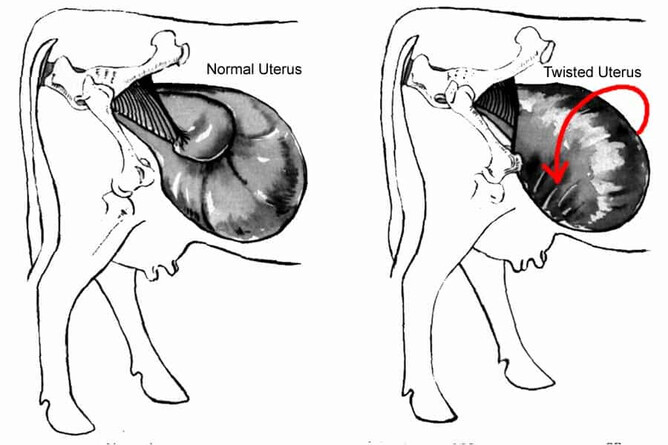Vet James reflects on a spring calving case.
While summer is now upon us and the focus has shifted to repro and scanning, it can be useful to look back on the season's just been and take on any learnings.
James Benstead, a mixed animal vet based out of the Winton clinic, reflects on a spring calving case he was called out to involving a second-calver with a uterine torsion:
At 5am one spring morning, I received a call from a farmer reporting his cow was struggling to calve and "felt weird inside".
Arriving on-farm at 6am, I found a bright second-calver who had been calving since the night before with no progress. With a glove on, I had a feel inside and found the cervix was tight and constricted. I was only able to get my hand and forearm through to feel the calf and my hand slightly twisted as it passed through into the uterus.
These signs are characteristic of a uterine torsion, or a twisted uterus, which is not an uncommon condition seen at calving time.
As the name suggests, it occurs when the uterus, which is hosting a big, heavy calf, twists, causing the cervix to constrict and physically preventing the cow from calving.
What causes uterine torsions?
The cause of uterine torsions is unknown. It’s thought to be a mix of many factors, with a bit of bad luck. If not corrected, the cow will not be able to calve, leading to death of the calf and eventual death of the cow.
Prognosis of uterine torsion cases are time-dependent, so the earlier they are picked up and treated, the better the prognosis.
Rolling the cow
There are a few techniques a vet may attempt to initially correct the torsion. One of the more common techniques is rolling the cow, which was attempted in this case.
Firstly, the direction of the twisted uterus needs to be determined, as it can be twisted either clockwise or anticlockwise, and this determines which direction to roll the cow.
During this case, we used a casting rope to cast the cow onto her side on the ground and then flipped/rolled her onto her other side, checking after every roll whether we had made any progress.
The aim is to try to roll the cow around the uterus, which is heavy with a calf and therefore sometimes stays in position as the cow is rolled around it. However, rolling is not always successful and, after attempting to roll this cow three times without progress, we resorted to caesarean surgery.
Caesarean surgery
While a caesarean can seem daunting, it is a perfectly good and reasonable option to fix many calving issues, including a uterine torsion, in cases where the cow is healthy and the calf is not rotten.
On this call out, the cow was prepped and the surgery was done, which resulted in pulling the freshly dead calf out of the side of the cow.
After her uterus was stitched up, I was then able to untwist it whilst inside the abdomen. The cow was stitched up and given plenty of antibiotics and pain relief, along with an oral mineral drench (including calcium and magnesium).
A couple of weeks on from the surgery and the cow was doing well - ready for her next milking season.
This is a good example of how to deal with a uterine torsion, and how early treatment can lead to good outcomes for the cow and the farmer.

